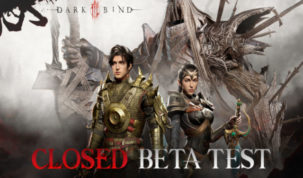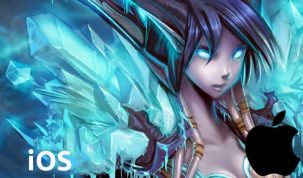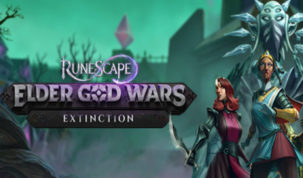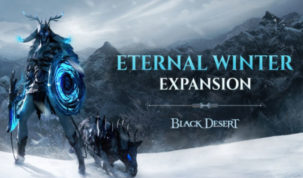It is an ancient system, but it is still in the market and ruins in some places. If you want to learn PostgreSQL, then first start with SQL. So, we can find troubleshooting with this Database efficiently. This sort of query or view needs also to be rebuilt any time a group is added or removed. Our team of writers strives to provide accurate and genuine reviews and articles, and all views and opinions expressed on our site are solely those of the authors.
PostgreSQL’s Feature Matrix is a table maintained by PostgreSQL outlining all of its features and which version those features were added in. PostgreSQL is an open-source project managed by The PostgreSQL Global Development Group. It is licensed using The PostgreSQL License, a license recognized by the Open Source Initiative. PostgreSQL, on the other hand, is technically an Object-Relational Database Management System (ORDBMS). This means that it has the same relational capabilities as an RDBMS, but additionally has some object-oriented features.
PostgreSQL vs SQL
Ivan Panchenko is the co-founder and deputy CEO of Postgres Professional, a company focused on making PostgreSQL enterprise-ready. A PostgreSQL enthusiast and well-known member of the PostgreSQL community, Panchenko works closely with enterprise customers and helps define product strategy. Panchenko is a professional astrophysicist and a software developer who started developing PostgreSQL-based applications in 1998. PostgreSQL has been widely adopted by industry in recent years.

Because of the security, the performance and how efficient this database engine can be for more complex projects that require a higher level of transaction and data handling. PostgreSQL has gained a great reputation as a powerful, feature-rich choice for relational data. Valuing stability, functionality, and standards conformance, PostgreSQL checks all of the right boxes for many projects. Similarly, if you require flexibility in how you can represent data and want to be able to use a variety of tools and languages, PostgreSQL is also a good choice. PostgreSQL can easily manage the most compelling requests of the biggest companies and institutions.
Business logic
I needed a very efficient database that could handle a huge amount of records, views and access for a data-scraping and analysis project. I was able to very easily do this with a combination of python for data processing, tableau for visualization and postgre-sql for the database. It has been running for a few years without any hiccups and with great efficiency. PostgreSQL is the most flexible database management system out there. It has a lot of plugins (data visualization, backup, performance, etc), which make it very expandable too, incredibly powerful configuration options, etc. It has almost any type of column that your system will ever need.
While no database can serve every need, PostgreSQL is an excellent option that is versatile enough to suit many use cases. ACID is an initialism in computer science that stands for atomicity, consistency, isolation, and durability. They represent the key guarantees that database transactions must support to avoid validity errors and maintain data integrity. Yet, it is rather imaginary advantage ― such simplicity is a result of a poorer functionality. So, it means that complex requests can be hardly handled in MySQL.
PostgreSQL: a closer look at the object-relational database management system
The performance analysis tools have been crucial in improving query execution and system performance as a whole. MySQL — a fast, reliable, scalable and easy-to-use open-source relational database system — is designed to handle mission-critical, heavy-load production applications. It is a common and easy-to-start database with low memory, disk and CPU utilization, managed by a relational database management system (RDMS).
- Shared_buffer, work_mem and temp_mem should both be set at 1GB (maximum on Windows, should be 25% or RAM for the first one and 10% of RAM for the others).
- Although some advocates of these databases believe they can.
- The object-relational Database specifies large, shared databases.
- In SQL, schema comprises field types and tables of your database.
- Other capabilities include the ability to run read-only queries while in recovery mode.
PostgreSQL is highly regarded for its robustness, scalability, and reliability, making it the perfect choice for businesses looking for a dependable and secure database. It has a wide array of features such as advanced indexing, support for stored procedures and triggers, as well as a wide array of data types, making it ideal for creating complex applications. It also supports an extensive range of languages and tools, making it easy to use for developers and administrators. Additionally, PostgreSQL has high availability and fault tolerance, making it suitable for mission-critical environments. Furthermore, PostgreSQL can be used in the cloud, making it an ideal solution for businesses looking for a reliable and secure database solution.
What are CLOBs (Character Large Objects)?
Relational databases enable your business to better understand the relationships among available data and help gain new insights for making better decisions or identifying new opportunities. For several past decades, https://www.globalcloudteam.com/ a leader among database options has been PostgreSQL. It is an advanced open-source object-relational system which applies SQL language. Postgres allows you to store large and sophisticated data safely.

It helps developers to build the most complex applications, run administrative tasks and create integral environments. Database in Postgres is typically used as a relational database. That means we have a database that works with some assumptions or in a certain way. Such a database works with tables like a data bin or a storage container. So in the SQL world when we query data with SQL we will have very strict requirements for data we store in our database table. With a clear schema of which data can go into a table and that schema is defined by fields.
Advantages and Disadvantages
Thus, you can manage both user groups and individual user roles based on a package of privileges, which will help you ensure access protection. In addition, the auditing option allows you to review users’ and groups’ data access activities in your database, which provides a layer of extra security. In addition to having built-in access protection, user management and encryption technology in today’s databases also includes the ability to integrate with other powerful access protection and encryption tools. One of the advantages of this manager is that it is simple to install and has a free license for various distributions and operating systems. It also allows you to configure the manager according to the team requirements. Other capabilities include the ability to run read-only queries while in recovery mode.

MySQL Community Edition is a free downloadable version supported by an active online community. There are many implementations of database systems that are either based on a fork of PostgreSQL, or which claim to be compatible with the PostgreSQL ecosystem of drivers. This is particularly true of the many PostgreSQL-compatible fully-managed DBaaS services. This mongodb vs postgresql is not surprising, due to the phenomenal popularity of PostgreSQL and its well-known shortcomings. Also, some cloud service providers replace the underlying storage engine of open-source PostgreSQL with their own storage-as-a-service offerings. They may also restrict or prevent the use of third-party extensions that one can use with the DBaaS offerings.
Learning resources availability: MongoDB vs PostgreSQL
The Always Encrypted feature allows you to encrypt certain columns in both states, at rest and in motion (i.e. the data remains encrypted in memory as well). This requirement checklist will lead you to the analysis of factors related to technology, your application, and your business. Also, I’ll compare PostgreSQL and MS SQL Server databases for each factor. MySQL Workbench is a single, integrated visual SQL platform used for the creation, development, design and management of MySQL databases. It has undergone over 30 years of development by a community of devoted and talented software engineers. Due to its liberal open-source license, it has become widely used and has a large, dedicated following.























